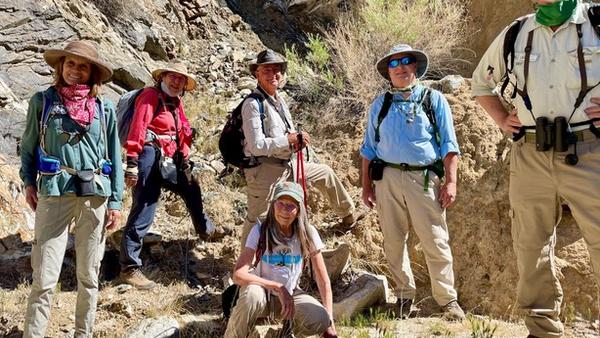How developing a sense of place benefits us all
"We need a sense of place. That's what makes our physical surroundings worth caring about." — Ed McMahon
A sense of place is a quality that naturalists have that is perhaps lacking in those who have not been taught or taken the time themselves to learn about the natural world in which they live. When you know the name of a plant or lizard or bird, and then understand how it makes its living, how it is integrated into the web of life, then it becomes a part of your life. You develop an intimacy with those creatures you know by name, they become friends you can greet when taking a walk around your neighborhood, or a hike on a trail. It is, or must be, difficult to tear across a landscape in a motorcycle or jeep or dump your trash on places where you know the creatures that live there and whose homes you may have destroyed, by name.
I heard on the national news recently that the pink cherry blossoms were blooming in Japan, and of the festivals and celebrations that were associated with that annual event. There was also mention of how those celebrations were tinged with concern about how climate change might be impacting their beloved trees. That same morning, I was taken aback by the magnificent yellow blossoms of the palo verde trees, and wondered where were our celebrations of this annual announcement that spring was in full splendor? In just a month or so the smoke trees will be in full bloom with their almost neon indigo blossoms. It seems like each year the smoke tree bloom is a bit earlier. It used to happen in June, just after all the “snowbirds” have left for their more northern and cooler homes. Now the bloom is in mid-May and sometimes earlier, perhaps one more indication of how the climate is changing, but whether in June or May, still no celebrations, no mention on the national or even local news.
Not long after the smoke trees, the ironwood trees will show off their lavender blossoms, a signal that spring has eclipsed to summer. Each blooming is accompanied with a plethora of pollinators; European honeybees of course, but especially with the smoke trees and ironwoods, native bees become dominant. The bee activity allows you to hear the density of blossoms on each tree. Our blooming trees are no less spectacular and beautiful than those cherry blossoms, but short of us naturalists, it seems like few take a moment to celebrate the changing seasons, to celebrate the diversity of life we share this landscape with. Sure, when the rains are right to create what the media has termed “super blooms" of annual flowers in the desert, then there is some media excitement. But, like the cherry trees, these deep-rooted legume-family trees bloom like this every year, even in a dry winter and spring like this one.
I equate this lack of celebratory acknowledgement of the changing seasons with a loss of a sense of place. Except for the Cahuilla (or whichever tribal lands you reside upon), few of us grew up within walking distance of our grandmothers and grandfathers, and fewer still in a place where our grandmothers and grandfathers grew up with their grandparents. That passing of local knowledge across generations has been largely severed. No walks with our grandparents who can then introduce us to the each of the creatures they know by name. Perhaps as important are those disapproving looks from our elders when we might in one way or another consider actions that would scar a natural landscape. Those too have been lost. There are a few instances where nature is still celebrated, such as the northeast when the fall leaf colors explode into riots of red, orange, and yellow. But, unlike much of the west, many of those northeastern hamlets still retain multigenerational occupancy, maintaining a culture of a sense of place.
I see support for my “multigenerational connection to a sense of place” hypothesis when I travel in Mexico, in Baja California. At or near the border crossings the landscape can be desolate, dominated by piles of trash, but maybe one hundred miles or so further south, the towns and homes are neat and tidy, surrounded by an unspoiled natural landscape. The difference may be that the border cities are boom towns where many people are displaced from where they grew up, arriving there for a chance to enter the U.S., or moving back and forth following the hope of economic opportunities but lacking a sense of place. Further south are the stable multigenerational communities where they retain their sense of place.
Creating and validating a sense of place is just one of the many important outcomes of the California Naturalist program and the subsequent spreading of that culture into “communities of naturalists." From learning the names of the creatures, to like Dr. Seuss’ Lorax who spoke for the trees, (and for all the natural world), these communities of naturalists have a sense of place, and can help others find theirs. The west in many ways still retains a “boom town” perspective when it comes to nature. The pressure on nature can be intense from developments, recreation activities, and the ever-present disposal of trash. By developing a sense of place and celebrating nature, we give it value, and when enough folks embrace that value, it can be protected.
"If you don't know where you are, you don't know who you are." — Wendell Berry
Nullius in verba
Go outside, tip your hat to a chuckwalla (and a cactus), and be safe.
